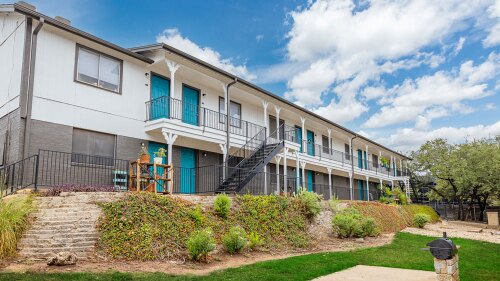This article is republished with permission from REITCafe.
Hawaii, the last piece of land brought into U.S. statehood, is a popular market for real estate investors in spite of the boom-and-bust nature of its markets.
A healthy outlook for the local economy and real estate market has attracted investors to the state, including many real estate investment trusts (REITs). Visitor volume has increased in spite of challenges stemming from the strong dollar and economic problems in places like China.
Few clouds are on the horizon, but the market should be closely watched because external shocks, ranging from weather events to terrorist attacks, can cause it to turn quickly.
| TREPP-i Survey Loan Spreads (50–59% LTV)* |
| This Week | Previous Week | Previous Month | End 2014 | End 2013 | |
| Industrial | 168 | 163 | 171 | 138.5 | 170 |
| Multifamily | 162 | 159 | 166 | 139.8 | 166.7 |
| Office | 170 | 166 | 175 | 148 | 175 |
| Retail | 168 | 161 | 171 | 139.8 | 175 |
| Average Spread | 167 | 162.25 | 170.75 | 141.5 | 171.7 |
| 10-year Treasury Yield** | 2.14 | 2.27 | 2.14 | 2.17 | 3.04 |
Real estate market fundamentals have improved in 2015, driven by a healthy economy. The state most recently added 12,000 jobs for the 12 months ended in October 2015, for a 1.9 percent growth rate. ManpowerGroup last week released a survey ranking Honolulu third among the 100 largest metro areas for job prospects in the first quarter of 2016.
The state’s key industries are tourism, construction, the military, government, education, and trans-Pacific sea shipments.
A total of 7.1 million visitors came to Hawaii during the first ten months of 2015, an increase of 4.2 percent from a year earlier, with an influx of visitors from the mainland primarily responsible.
The strong U.S. dollar has generally had a negative impact on international travel to Hawaii. Nevertheless, visitor arrivals from China were up 28 percent during 2014 and have grown 6.2 percent so far this year. Recent economic problems in that country have not led to a reduction in travel. In contrast, Japanese visits declined 0.5 percent during 2014 and are down 0.9 percent so far this year. Chinese visitors spend more than Japanese tourists, but Chinese visitors represent only about 10 percent of the 1.5 million visitors to Hawaii from Japan.
Construction is another source of strong economic growth. Numerous housing developments are moving forward, including Kamehameha Schools’ Kaka’ako redevelopment project, where more than 30 condominium buildings are planned or underway. A 20-mile (32 km) rail project across southern Oahu is also creating construction jobs. The first ten miles (16 km) of the rail project could open in 2018.
Most property types have low vacancies and rising rents. In recent years, Hawaii has lost traditional hotel rooms in favor of condos, time shares, and other lodging options. Still, local hotel occupancy and average daily rates are better than last year, according to reports from Hospitality Advisors and STR.
For the retail market, third-quarter vacancy was 3.74 percent, and rent growth totaled 4.95 percent during the first nine months of the year, according to Colliers International. Colliers also reported a very low 2.15 percent third-quarter industrial vacancy rate.
Oahu’s office vacancy has fluctuated between 12 and 14 percent in recent years, most recently measuring 13.2 percent during the third quarter of this year, according to Colliers. Office rents are rising. The conversion of Waikiki Trade Center from office to resort use removes a significant block of obsolete office space from the market.
NAREIT estimates that 20 major REITs have invested about $6 billion in commercial real estate in Hawaii. For some, like Host Hotels, the investments are significant but represent a small part of their overall portfolios. Host Hotels owns three Hawaii properties totaling 1,682 rooms that represent 3.3 percent of its domestic portfolio. Retail REITs General Growth Properties (GGP) and Taubman Centers are increasing their investment in Hawaii. GGP, which owns 62.5 percent of Ala Moana Center (95.8 percent leased), opened its new Ewa wing in November, while Taubman is redeveloping the International Market Place as a mall that will be anchored by Saks Fifth Avenue.
REITs whose Hawaiian investments represent a greater proportion of their portfolios include Douglas Emmett, American Assets Trust, and Select Income REIT.
- Douglas Emmett’s portfolio of office and apartment properties in Los Angeles and Honolulu includes three Hawaii apartment properties totaling 1,566 units that are 99.4 percent leased. The expansion of its Moanalua Hillside Apartments by 500 units is scheduled for completion in late 2017. Four of its 62 office buildings, totaling 1.7 million square feet (158,000 sq m), are also located in Hawaii. Its Honolulu office properties are 87.7 percent leased.
- American Assets Trust focuses on the U.S. West Coast and Hawaii. Its retail portfolio includes two Hawaii properties totaling almost 550,000 square feet (51,000 sq m) that represent 18 percent of its retail portfolio and are more than 98 percent leased. It also owns the Waikiki Beach Walk mixed-use lodging and retail project.
- Select Income REIT derives significant revenue from land leases near Pearl Harbor. Its portfolio includes 11 properties with about 17.8 million square feet (1.65 million sq m) of industrial and commercial space.
REITs with investments in Hawaii are not without question marks, including Hawaii’s State Bill 118, which became law in July. Originally a proposal to eliminate the deduction for dividends paid for all REITs in the state, the legislation evolved into a study of REIT activity and the effect of repealing REIT tax breaks.
Results of the $100,000 study are due before the 2016 legislative session convenes in January and could lead to further legislation. Currently, New Hampshire is the only state that requires REITs to pay corporate income taxes.
* TREPP-i Survey Loan Spreads levels are based on a survey of balance sheet lenders. For more information, visit Trepp.com.
** - 10 yr. Treasury Yield as of 12/11/2015.





